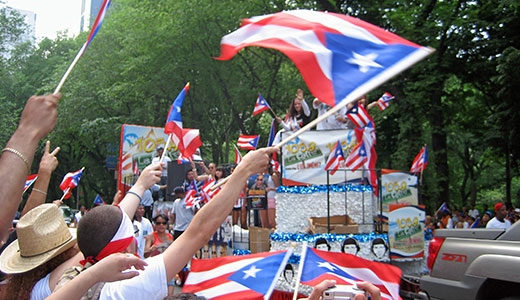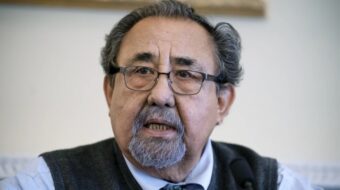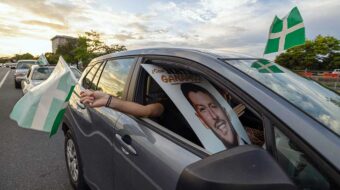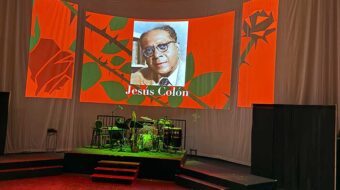
Rep. Luis Gutierrez, D-Ill., took the floor in the U.S. Congress recently to criticize Puerto Rican Gov. Luis Fortuno for his handling of the student strike at the University of Puerto Rico. Guitierrez was addressing the ongoing protests over a new $800 fee that will have a severe impact on UPR’s enrollment, given that 60 percent of students are from families with incomes of $20,000 and less.
Pedro Pierluisi, the non-voting member who represents Puerto Rico in the House (his official title is Puerto Rico’s Resident Commissioner in Washington D.C.), called the speech “inappropriate and insulting to the people of Puerto Rico,” adding “I am the only member of Congress who represents Puerto Rico.”
But it’s not so simple.
Puerto Ricans in the U.S. have strong ties with the island, and vice versa. Many people live “stateside” for years, and then retire in Puerto Rico. Others visit regularly; still others move one way or the other at different points in life to be with family.
Yet while there are these ties and of course many commonalities among all Puerto Ricans, there are also differences and divisions, both within Puerto Rican society and between the Puerto Rican community in the U.S. and those who live on the island.
A recent article by Angelo Falcon, president of the National Institute for Latino Policy, entitled, “Challenges Facing Stateside Puerto Ricans in the 21st Century,” reveals both new features and persistent problems.
The biggest change is that the number of Puerto Ricans living in the U.S. is now 4.2 million, compared to 3.5 million in Puerto Rico, making this the first time since 1910 that Puerto Rico’s population has declined as the stateside population increased, “reflecting an outmigration from Puerto Rico perhaps as great as that of the 1940s.”
What are some of the political ramifications of this change?
Falcon says this shift “poses some interesting questions about the relationship between the two communities.”
There are three veteran Puerto Rican members of Congress who represent areas with large Puerto Rican and Latino communities: Nydia Velásquez and José Serrano from New York, and Luis Gutierrez from Chicago – all Democrats. (In last fall’s midterm election, right-wing Republican Raul Labrador was also elected from Idaho.)
According to Falcon, these lawmakers, who are “stateside” Puerto Ricans, “have come to the rescue of Puerto Rico time and time again when the U.S. federal government has treated the U.S. citizens of Puerto Rico unfairly in terms of budget and other policy matters.” He continues, “On the other hand, Puerto Rico has not been as supportive of the development of the stateside Puerto Rican community as it could be.”
Some of this is obviously attributable to the base – poor, working-class communities, heavily Democratic – that elects these U.S. congresspeople. By contrast, the power structure in Puerto Rico is contested and includes Republicans (or their equivalent) and corporate interests.
Falcon points to “commentary in Washington, D.C., about how Island corporate and political interests have … displaced the core mission of the only stateside Puerto Rican national civil rights organization inside the Beltway, the National Puerto Rican Coalition (NPRC), turning it into a largely lobbying firm for those interests.”
Falcon notes that “the stateside Puerto Rican reality has become more complex than ever.” And he describes demographic changes that may have political ramifications. “Where New York City was once home to 80 percent of the Puerto Ricans residing in the United States, today less than a quarter live in the Big Apple, although it remains the largest concentration with close to 800,000 Puerto Ricans.”
Meanwhile, he continues, “The big story … is the ‘Florida phenomenon.’ Florida [now] has the second largest concentration of Puerto Ricans of all the states with 728,637 in 2009 (4 percent of the state’s population).”
The article notes growing economic disparity in the Puerto Rican population, which “has become more diverse, [with] the development over time of a geographic economic polarization, with high poverty areas in the traditionally Puerto Rican regions of the Northeast and Midwest, and more affluence in more newly settled areas in the South and West.”
Finally, the article looks at the relationship between the Puerto Rican population and the larger Latino community, noting “the challenge of the seemingly growing invisibility of specifically stateside Puerto Rican issues.”
He continues, “Issues for the Puerto Rican community are not identical to issues for Latinos overall, where immigration rights are at the top of the agenda,” although “Puerto Ricans have and continue to play a leading role in the struggle for the protection of immigrant rights,” despite the fact that Puerto Ricans were made citizens in 1917.
For the stateside Puerto Rican community, the biggest issues are jobs, housing, and education. Puerto Rican youth, for example, have the highest high school dropout rates in New York City, and share the highest unemployment rates with African American young men.
Falcon’s article is available here.
Photo: Puerto Rican Day Parade in New York, 2008. Oquendo CC 2.0










